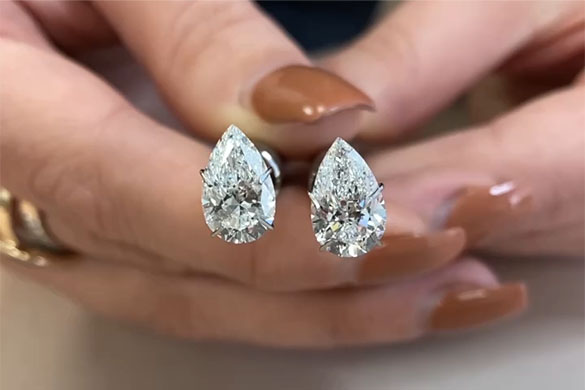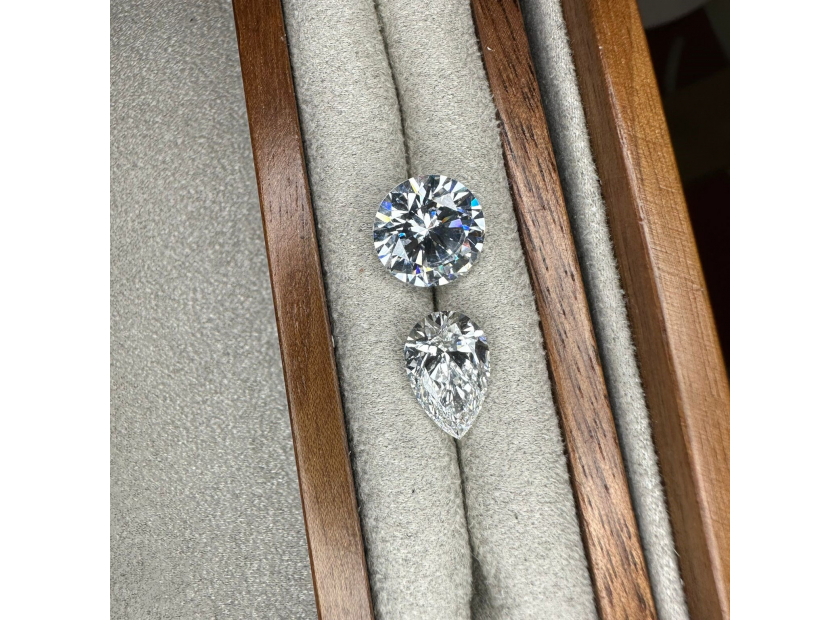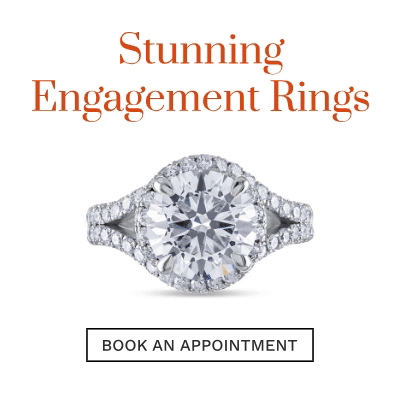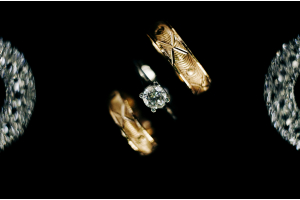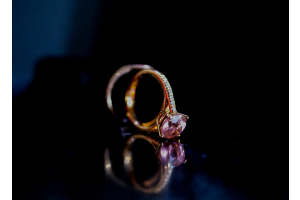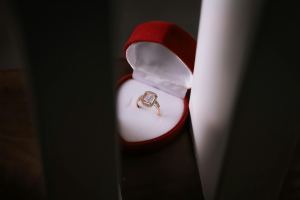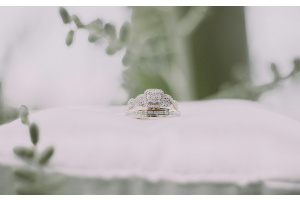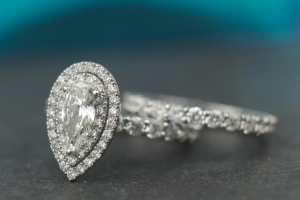USD
/
USD
/
Shipping to:
Currency:
Lab-Grown Diamonds vs. Cubic Zirconia: Understanding the Differences
When it comes to choosing a gemstone, whether for an engagement ring, a pair of earrings, or any other piece of jewelry, it's crucial to understand the differences between lab-grown diamonds and cubic zirconia. While both can be stunning options, they vary significantly in terms of composition, value, durability, and overall characteristics. Understanding these differences will help you make an informed decision when selecting the perfect gemstone for your needs.
What Are Lab-Grown Diamonds?
Lab-grown diamonds, also known as synthetic diamonds or cultured diamonds, are created in a controlled environment using advanced technological processes that mimic the natural formation of diamonds. These diamonds are made of pure carbon, the same element found in natural diamonds, and possess identical physical, chemical, and optical properties. The key difference is that lab-grown diamonds are created in a matter of weeks or months, as opposed to the millions of years it takes for natural diamonds to form deep within the Earth's mantle.
Lab-grown diamonds have gained popularity as an ethical and environmentally friendly alternative to natural diamonds. Since they are created in a controlled setting, lab-grown diamonds do not require mining, which can have significant environmental and social impacts. Additionally, they offer excellent value, often costing 20-40% less than their natural counterparts, while still providing the same brilliance, fire, and sparkle.
What Is Cubic Zirconia?
Cubic zirconia (CZ) is a synthetic gemstone made from zirconium dioxide. It was first developed in the 1970s as a more affordable alternative to diamonds. Unlike lab-grown diamonds, cubic zirconia is not made from carbon and does not share the same properties as a diamond. While it is visually similar to a diamond and can be a beautiful, sparkling stone, cubic zirconia is fundamentally different in its composition and characteristics.
Cubic zirconia is known for its affordability and is often used in fashion jewelry and as a substitute for diamonds in various settings. However, it's important to note that cubic zirconia is much softer than a diamond, making it more prone to scratches and damage over time. While it can mimic the appearance of a diamond, it lacks the durability and long-term value that diamonds, both natural and lab-grown, provide.
Comparing Appearance and Quality
At first glance, both lab-grown diamonds and cubic zirconia can appear quite similar, especially when viewed by an untrained eye. Both stones can exhibit impressive sparkle and brilliance. However, under closer inspection, the differences become more apparent.
Lab-grown diamonds have the same optical properties as natural diamonds, which means they exhibit the same level of brilliance, fire, and scintillation. This is due to the way light interacts with the diamond's facets, creating the characteristic sparkle that diamonds are known for. Cubic zirconia, while still sparkly, tends to have a different kind of brilliance. It often displays a more "rainbow-like" effect, which can be a telltale sign that the stone is not a diamond.
Over time, cubic zirconia can become cloudy or dull due to its lower hardness and tendency to attract oils and dirt. Lab-grown diamonds, on the other hand, maintain their brilliance and sparkle indefinitely, making them a better long-term investment.
Durability and Longevity
One of the key factors to consider when choosing between lab-grown diamonds and cubic zirconia is durability. Diamonds, whether natural or lab-grown, are the hardest known material on the Mohs scale, scoring a perfect 10. This hardness makes them highly resistant to scratches, chips, and other forms of damage, ensuring that they retain their beauty for a lifetime.
Cubic zirconia, by contrast, has a lower hardness, typically around 8-8.5 on the Mohs scale. This means that while it is still relatively hard, it is more susceptible to scratching and abrasion. Over time, this can lead to a loss of clarity and luster, and the stone may need to be replaced or polished more frequently.
Value and Cost Considerations
When it comes to cost, cubic zirconia is significantly less expensive than both natural and lab-grown diamonds. This affordability makes cubic zirconia an attractive option for those looking for a budget-friendly alternative to diamonds. However, it's important to consider the long-term value. Lab-grown diamonds, while more expensive than cubic zirconia, offer lasting value and durability, making them a better investment in the long run.
Lab-grown diamonds hold their value better than cubic zirconia and are often indistinguishable from natural diamonds without specialized equipment. This makes them a desirable choice for those who want the look and feel of a diamond without the higher price tag of a mined stone.
Ethical and Environmental Impact
One of the major advantages of lab-grown diamonds is their ethical and environmental benefits. The diamond mining industry has long been associated with environmental degradation and human rights issues. Lab-grown diamonds eliminate these concerns by providing a more sustainable and ethical option. The process of creating lab-grown diamonds requires significantly less energy and resources compared to mining, and it does not involve the displacement of communities or the destruction of ecosystems.
Cubic zirconia, being a synthetic material, also avoids the ethical concerns associated with natural diamond mining. However, it does not offer the same environmental benefits as lab-grown diamonds, particularly in terms of energy efficiency and carbon footprint. For those who are environmentally conscious, lab-grown diamonds are the superior choice.
Conclusion: Making an Informed Choice
When deciding between lab-grown diamonds and cubic zirconia, it's essential to consider your priorities and what you value most in a gemstone. If you're looking for a stone that offers the same brilliance, durability, and ethical considerations as a natural diamond, but at a lower cost, lab-grown diamonds are an excellent choice. They provide lasting value and peace of mind, knowing that your purchase has a minimal environmental impact.
On the other hand, if budget is your primary concern and you're looking for a beautiful stone to wear for a short time or in a piece of fashion jewelry, cubic zirconia may be a suitable option. However, it's important to be aware of its limitations in terms of durability and long-term value.
Ultimately, both lab-grown diamonds and cubic zirconia have their place in the world of jewelry, and the best choice depends on your individual needs and preferences.
FAQs
Are lab-grown diamonds real diamonds?
Yes, lab-grown diamonds are real diamonds. They are chemically, physically, and optically identical to natural diamonds, with the only difference being their origin. Lab-grown diamonds are created in a controlled environment, while natural diamonds form over millions of years in the Earth's mantle.
How can you tell the difference between a lab-grown diamond and cubic zirconia?
The difference between a lab-grown diamond and cubic zirconia can be challenging to spot with the naked eye, but there are key differences. Lab-grown diamonds have the same hardness and optical properties as natural diamonds, resulting in superior brilliance and fire. Cubic zirconia, on the other hand, tends to have a more "rainbow-like" brilliance and is softer, making it more prone to scratches and cloudiness over time.
Do lab-grown diamonds hold their value?
Lab-grown diamonds generally hold their value better than cubic zirconia, but not as well as natural diamonds. While they offer excellent quality and durability, the resale market for lab-grown diamonds is still developing. However, they remain a valuable and ethical choice for those who prioritize quality and sustainability.
Is cubic zirconia a good choice for engagement rings?
Cubic zirconia can be a budget-friendly option for engagement rings, but it may not be the best choice for long-term wear. Due to its lower hardness, cubic zirconia is more susceptible to scratches and damage, which can diminish its appearance over time. For an engagement ring that will last a lifetime, lab-grown diamonds offer better durability and lasting beauty.
What is the main advantage of choosing cubic zirconia?
The main advantage of cubic zirconia is its affordability. It allows individuals to enjoy the look of a diamond at a fraction of the cost. However, this cost savings comes with trade-offs in terms of durability and long-term value.
Are lab-grown diamonds environmentally friendly?
Lab-grown diamonds are considered more environmentally friendly than natural diamonds. Their production requires fewer resources, and they do not involve mining, which can have significant environmental impacts. Additionally, the carbon footprint of lab-grown diamonds is generally lower, making them a more sustainable choice.
Can cubic zirconia be used in fine jewelry?
Yes, cubic zirconia is often used in fine jewelry, particularly in pieces where cost is a significant consideration. While it lacks the durability and long-term value of diamonds, it can still be a beautiful and affordable option for various types of jewelry.
How does the hardness of lab-grown diamonds compare to cubic zirconia?
Lab-grown diamonds score a perfect 10 on the Mohs scale of hardness, the same as natural diamonds, making them highly resistant to scratches and damage. Cubic zirconia, on the other hand, has a hardness of 8-8.5, making it more susceptible to scratches and less durable over time.
Is it possible to insure a lab-grown diamond?
Yes, lab-grown diamonds can be insured just like natural diamonds. They are considered valuable assets, and many insurance companies offer policies that cover lab-grown diamonds for loss, theft, or damage. When insuring a lab-grown diamond, it's important to provide proper documentation, such as a grading report, to establish its value.
Can cubic zirconia become cloudy over time?
Yes, cubic zirconia can become cloudy over time, especially if it is exposed to oils, dirt, and chemicals. Its lower hardness also makes it more prone to scratches, which can affect its clarity and sparkle. Regular cleaning and proper care can help maintain its appearance, but it may still require more frequent maintenance than a diamond.
